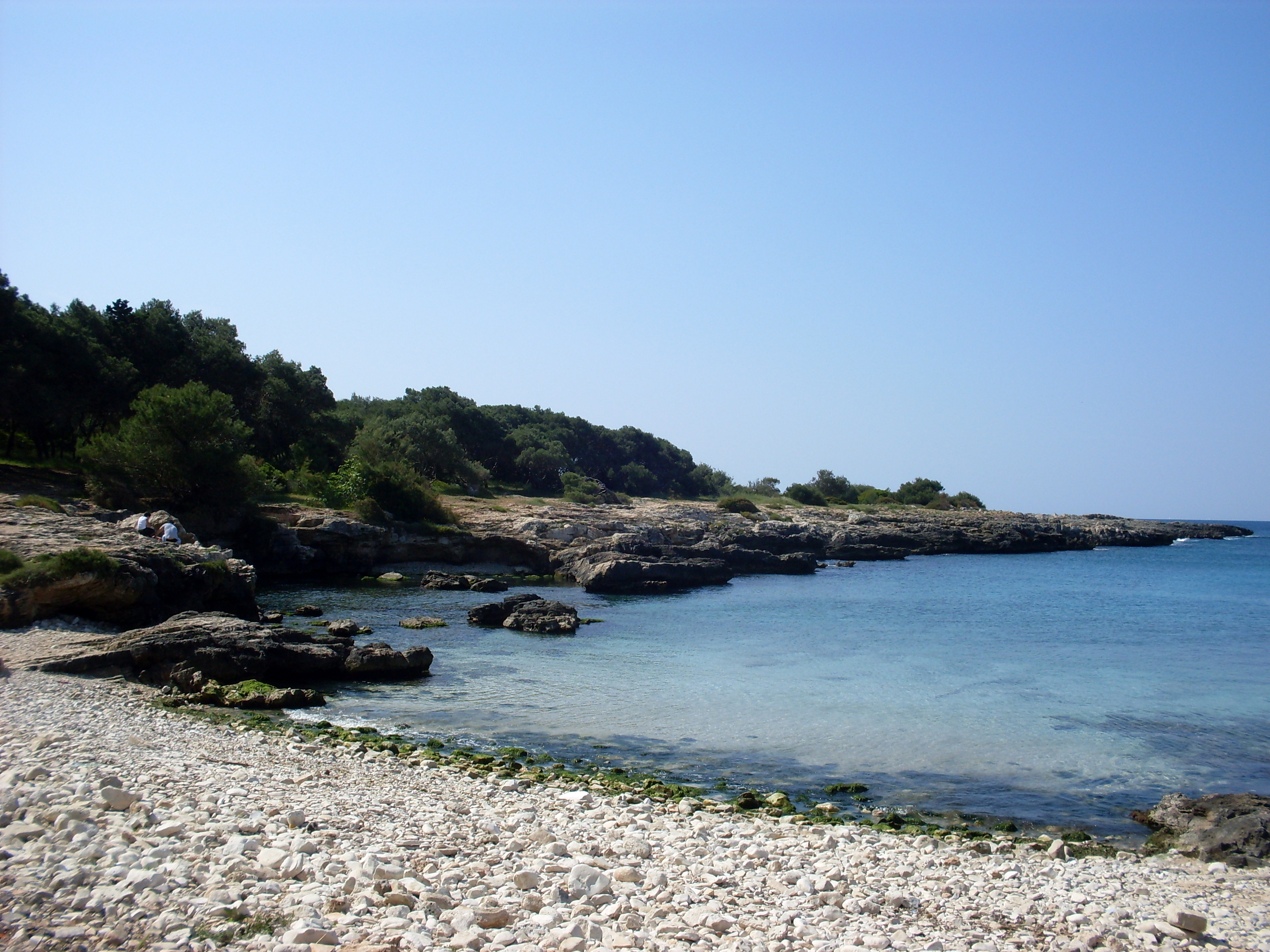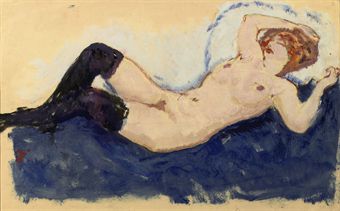Fresh Basil Pesto Recipe
INGREDIENTS
- 2 cups fresh basil leaves, packed
- 1/2 cup freshly grated Parmesan-Reggiano or Romano cheese
- 1/2 cup extra virgin olive oil
- 1/3 cup pine nuts or walnuts
- 3 medium sized garlic cloves, minced
- Salt and freshly ground black pepper to taste
- Special equipment needed: A food processor (Check Amazon.com's sales on Cuisinart food processors)
another recipe METHOD
1 Combine the basil in with the pine nuts, pulse a few times in a food processor. (If you are using walnuts instead of pine nuts and they are not already chopped, pulse them a few times first, before adding the basil.) Add the garlic, pulse a few times more.
2 Slowly add the olive oil in a constant stream while the food processor is on. Stop to scrape down the sides of the food processor with a rubber spatula. Add the grated cheese and pulse again until blended. Add a pinch of salt and freshly ground black pepper to taste.
Serve with pasta, or over baked potatoes, or spread over toasted baguette slices.Ingredients
 Pine Kernels. I bought the ones pictured here from an organic shop. I'm dubious as to whether or not they're much better than ordinary pine kernels, but they certainly seemed to cost a lot more! However, hopefully organic foods have a lower environmental impact, so I don't feel so bad about the extra expense. Although I'll probably be beaten to death by an angry mob of Italians for saying it, as far as I'm concerned pine kernels are pine kernels. I don't personally believe the quality of pine kernels will have much of an impact on your pesto.
Pine Kernels. I bought the ones pictured here from an organic shop. I'm dubious as to whether or not they're much better than ordinary pine kernels, but they certainly seemed to cost a lot more! However, hopefully organic foods have a lower environmental impact, so I don't feel so bad about the extra expense. Although I'll probably be beaten to death by an angry mob of Italians for saying it, as far as I'm concerned pine kernels are pine kernels. I don't personally believe the quality of pine kernels will have much of an impact on your pesto.
 Parmesan. Well sort of. So called "real" Parmesan is always made with animal rennet so I never buy it. I gather it's a bit like the Champagne issue; any Parmesan not made in the correct region to the correct method can't be called Parmesan. For a while now I've been buying this alternative made by Twineham Grange Farms. It used to be called Vegetarian Parmesan, then for a while Vegetarian Parmesan style cheese. Apparently neither were acceptable so they had to settle for the rather unevocative "Italian Style Premium Cheese". I feel no shame in this blatant product endorsement, I love the stuff, it is an award winning cheese, and it is totally vegetarian. Often pesto will also contain Grand Padano. I've yet to find a vegetarian version of this, so I just leave it out.
Parmesan. Well sort of. So called "real" Parmesan is always made with animal rennet so I never buy it. I gather it's a bit like the Champagne issue; any Parmesan not made in the correct region to the correct method can't be called Parmesan. For a while now I've been buying this alternative made by Twineham Grange Farms. It used to be called Vegetarian Parmesan, then for a while Vegetarian Parmesan style cheese. Apparently neither were acceptable so they had to settle for the rather unevocative "Italian Style Premium Cheese". I feel no shame in this blatant product endorsement, I love the stuff, it is an award winning cheese, and it is totally vegetarian. Often pesto will also contain Grand Padano. I've yet to find a vegetarian version of this, so I just leave it out.
 Fresh basil. I absolutely adore basil, the taste of it, the smell of it, even running my fingers through the plant itself. It is marvellous stuff. I've found it's much better to buy these growing pots rather than cut leaves - it lasts longer, it's better value for money, makes a nice addition to the window sill in your kitchen, and I think it tastes better too.
Fresh basil. I absolutely adore basil, the taste of it, the smell of it, even running my fingers through the plant itself. It is marvellous stuff. I've found it's much better to buy these growing pots rather than cut leaves - it lasts longer, it's better value for money, makes a nice addition to the window sill in your kitchen, and I think it tastes better too.
 Rocket. Not exactly a standard pesto ingredient, so you can leave this out altogether and just use a lot more basil instead. To be honest, I used rocket this time because I didn't have enough basil! However, I think it makes a great addition, an extra little kick, and seems to blend wonderfully with the flavour of the basil.
Rocket. Not exactly a standard pesto ingredient, so you can leave this out altogether and just use a lot more basil instead. To be honest, I used rocket this time because I didn't have enough basil! However, I think it makes a great addition, an extra little kick, and seems to blend wonderfully with the flavour of the basil.
 Olive Oil. To my mind no Italian food is complete without olive oil. The one pictured here isn't a particularly wonderful brand or anything, it's just what I happened to be able to get hold of from my local supermarket.
Olive Oil. To my mind no Italian food is complete without olive oil. The one pictured here isn't a particularly wonderful brand or anything, it's just what I happened to be able to get hold of from my local supermarket.
Method
 There's nothing really to it, all you really need is a food mixer. I use a little handheld one. The quantities are really up to you. I never really measure stuff myself. Roughly speaking, I guess I use something like 1 part pine kernels to 2 parts cheese to 4+ parts basil and rocket. Then just lots of olive oil! You can always add more of one ingredient if it doesn't look quite right after the first blend. Be careful here, I managed to break one of the attachments on my little food processor (I think it was already cracked from previous abuse). It's probably a good idea to feed a bit in at a time, and start with the harder things (pine kernels, then cheese) and move onto the softer things. It seemed to stress the mixer less if there was a reasonable amount of liquid in there too.
There's nothing really to it, all you really need is a food mixer. I use a little handheld one. The quantities are really up to you. I never really measure stuff myself. Roughly speaking, I guess I use something like 1 part pine kernels to 2 parts cheese to 4+ parts basil and rocket. Then just lots of olive oil! You can always add more of one ingredient if it doesn't look quite right after the first blend. Be careful here, I managed to break one of the attachments on my little food processor (I think it was already cracked from previous abuse). It's probably a good idea to feed a bit in at a time, and start with the harder things (pine kernels, then cheese) and move onto the softer things. It seemed to stress the mixer less if there was a reasonable amount of liquid in there too.
 Here's the finished product! It's really difficult to describe how to know when it's just right. I just have an idea in my head of how I like pesto to be. I imagine everyone has slightly different tastes. I like it to be fairly liquid, still a tiny bit chunky, and really fresh tasting. As I said before, if it doesn't taste quite right on the first go, add more of whatever you feel it's lacking and give it another blitz. If it's too dry, add more olive oil. If it's the wrong colour (not green enough), or too hard, you probably need to add more basil. If upon tasting it you are strongly tempted to sod the pasta and just eat the lot straight out of the blender, you've probably got it spot on.
Here's the finished product! It's really difficult to describe how to know when it's just right. I just have an idea in my head of how I like pesto to be. I imagine everyone has slightly different tastes. I like it to be fairly liquid, still a tiny bit chunky, and really fresh tasting. As I said before, if it doesn't taste quite right on the first go, add more of whatever you feel it's lacking and give it another blitz. If it's too dry, add more olive oil. If it's the wrong colour (not green enough), or too hard, you probably need to add more basil. If upon tasting it you are strongly tempted to sod the pasta and just eat the lot straight out of the blender, you've probably got it spot on.
Serving
 I think this kind of pesto goes brilliantly with just some straightforward fresh pasta, no need for anything particularly fancy. On this particular occasion, I've served it with some (shop bought) garlic and herb ravioli. This pasta has quite a subtle flavour, so you can really appreciate the pesto. Better still, use some home made pasta. Alongside this, partly just to add a little colour, I've thrown together a simple tomato and rocket salad, and covered the whole lot in shavings of Vegetarian Parmesan (hell I'm going to call it Parmesan regardless), a good drizzling of olive oil, and some freshly ground black pepper. I'm a huge fan of big white plates, especially for this sort of meal.
I think this kind of pesto goes brilliantly with just some straightforward fresh pasta, no need for anything particularly fancy. On this particular occasion, I've served it with some (shop bought) garlic and herb ravioli. This pasta has quite a subtle flavour, so you can really appreciate the pesto. Better still, use some home made pasta. Alongside this, partly just to add a little colour, I've thrown together a simple tomato and rocket salad, and covered the whole lot in shavings of Vegetarian Parmesan (hell I'm going to call it Parmesan regardless), a good drizzling of olive oil, and some freshly ground black pepper. I'm a huge fan of big white plates, especially for this sort of meal.
 Here's a closeup. Looking at this makes me want to eat it all over again. Although I say so myself, this really was delicious! Take a look at the full size picture yourself, and try to tell me you don't feel hungry. There's something wonderful about the colour of really fresh pesto - it has a a sort of liveliness to it that the stuff that comes in a jar can't reall
Here's a closeup. Looking at this makes me want to eat it all over again. Although I say so myself, this really was delicious! Take a look at the full size picture yourself, and try to tell me you don't feel hungry. There's something wonderful about the colour of really fresh pesto - it has a a sort of liveliness to it that the stuff that comes in a jar can't reall
 Pine Kernels. I bought the ones pictured here from an organic shop. I'm dubious as to whether or not they're much better than ordinary pine kernels, but they certainly seemed to cost a lot more! However, hopefully organic foods have a lower environmental impact, so I don't feel so bad about the extra expense. Although I'll probably be beaten to death by an angry mob of Italians for saying it, as far as I'm concerned pine kernels are pine kernels. I don't personally believe the quality of pine kernels will have much of an impact on your pesto.
Pine Kernels. I bought the ones pictured here from an organic shop. I'm dubious as to whether or not they're much better than ordinary pine kernels, but they certainly seemed to cost a lot more! However, hopefully organic foods have a lower environmental impact, so I don't feel so bad about the extra expense. Although I'll probably be beaten to death by an angry mob of Italians for saying it, as far as I'm concerned pine kernels are pine kernels. I don't personally believe the quality of pine kernels will have much of an impact on your pesto.  Parmesan. Well sort of. So called "real" Parmesan is always made with animal rennet so I never buy it. I gather it's a bit like the Champagne issue; any Parmesan not made in the correct region to the correct method can't be called Parmesan. For a while now I've been buying this alternative made by Twineham Grange Farms. It used to be called Vegetarian Parmesan, then for a while Vegetarian Parmesan style cheese. Apparently neither were acceptable so they had to settle for the rather unevocative "Italian Style Premium Cheese". I feel no shame in this blatant product endorsement, I love the stuff, it is an award winning cheese, and it is totally vegetarian. Often pesto will also contain Grand Padano. I've yet to find a vegetarian version of this, so I just leave it out.
Parmesan. Well sort of. So called "real" Parmesan is always made with animal rennet so I never buy it. I gather it's a bit like the Champagne issue; any Parmesan not made in the correct region to the correct method can't be called Parmesan. For a while now I've been buying this alternative made by Twineham Grange Farms. It used to be called Vegetarian Parmesan, then for a while Vegetarian Parmesan style cheese. Apparently neither were acceptable so they had to settle for the rather unevocative "Italian Style Premium Cheese". I feel no shame in this blatant product endorsement, I love the stuff, it is an award winning cheese, and it is totally vegetarian. Often pesto will also contain Grand Padano. I've yet to find a vegetarian version of this, so I just leave it out.  Rocket. Not exactly a standard pesto ingredient, so you can leave this out altogether and just use a lot more basil instead. To be honest, I used rocket this time because I didn't have enough basil! However, I think it makes a great addition, an extra little kick, and seems to blend wonderfully with the flavour of the basil.
Rocket. Not exactly a standard pesto ingredient, so you can leave this out altogether and just use a lot more basil instead. To be honest, I used rocket this time because I didn't have enough basil! However, I think it makes a great addition, an extra little kick, and seems to blend wonderfully with the flavour of the basil. Method
 Here's the finished product! It's really difficult to describe how to know when it's just right. I just have an idea in my head of how I like pesto to be. I imagine everyone has slightly different tastes. I like it to be fairly liquid, still a tiny bit chunky, and really fresh tasting. As I said before, if it doesn't taste quite right on the first go, add more of whatever you feel it's lacking and give it another blitz. If it's too dry, add more olive oil. If it's the wrong colour (not green enough), or too hard, you probably need to add more basil. If upon tasting it you are strongly tempted to sod the pasta and just eat the lot straight out of the blender, you've probably got it spot on.
Here's the finished product! It's really difficult to describe how to know when it's just right. I just have an idea in my head of how I like pesto to be. I imagine everyone has slightly different tastes. I like it to be fairly liquid, still a tiny bit chunky, and really fresh tasting. As I said before, if it doesn't taste quite right on the first go, add more of whatever you feel it's lacking and give it another blitz. If it's too dry, add more olive oil. If it's the wrong colour (not green enough), or too hard, you probably need to add more basil. If upon tasting it you are strongly tempted to sod the pasta and just eat the lot straight out of the blender, you've probably got it spot on.Serving
 I think this kind of pesto goes brilliantly with just some straightforward fresh pasta, no need for anything particularly fancy. On this particular occasion, I've served it with some (shop bought) garlic and herb ravioli. This pasta has quite a subtle flavour, so you can really appreciate the pesto. Better still, use some home made pasta. Alongside this, partly just to add a little colour, I've thrown together a simple tomato and rocket salad, and covered the whole lot in shavings of Vegetarian Parmesan (hell I'm going to call it Parmesan regardless), a good drizzling of olive oil, and some freshly ground black pepper. I'm a huge fan of big white plates, especially for this sort of meal.
I think this kind of pesto goes brilliantly with just some straightforward fresh pasta, no need for anything particularly fancy. On this particular occasion, I've served it with some (shop bought) garlic and herb ravioli. This pasta has quite a subtle flavour, so you can really appreciate the pesto. Better still, use some home made pasta. Alongside this, partly just to add a little colour, I've thrown together a simple tomato and rocket salad, and covered the whole lot in shavings of Vegetarian Parmesan (hell I'm going to call it Parmesan regardless), a good drizzling of olive oil, and some freshly ground black pepper. I'm a huge fan of big white plates, especially for this sort of meal.  Here's a closeup. Looking at this makes me want to eat it all over again. Although I say so myself, this really was delicious! Take a look at the full size picture yourself, and try to tell me you don't feel hungry. There's something wonderful about the colour of really fresh pesto - it has a a sort of liveliness to it that the stuff that comes in a jar can't reall
Here's a closeup. Looking at this makes me want to eat it all over again. Although I say so myself, this really was delicious! Take a look at the full size picture yourself, and try to tell me you don't feel hungry. There's something wonderful about the colour of really fresh pesto - it has a a sort of liveliness to it that the stuff that comes in a jar can't reall

yTUTnBQJ48gM+DQ~~60_12.JPG)
































![[jan-sluijters.jpg]](https://blogger.googleusercontent.com/img/b/R29vZ2xl/AVvXsEivaBKO5yshYIIanchqVczVNjdMXmNA6rta-wxM-maAhizxlJE4E5U9-bSJZ79WO-aT3QAg9SPF8VU7uPlKzzAgELPstxBOiWC6cLQ2TsUvxoEGwRyuBk5dyS0N_-FbRfQkhqz3FYuS-NcW/s400/jan-sluijters.jpg)



